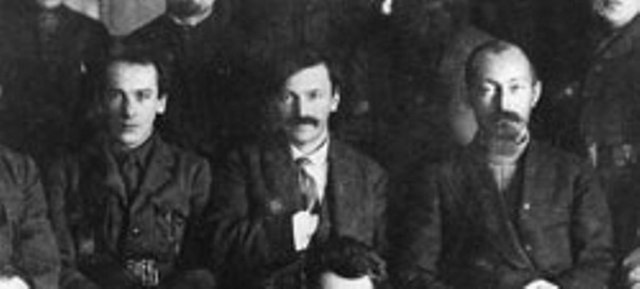Ignace Reiss – also known as "Ignace Poretsky," "Ignatz Reiss," "Ludwig," "Ludwik", "Hans Eberhardt," "Steff Brandt," Nathan Poreckij, and "Walter Scott " – was one of the "Great Illegals" or Soviet spies who worked in third party countries where they were not nationals in the late 1920s and 1930s. He was known as a nevozvrashchenec ("unreturnable").
Reiss' brother died in the Polish-Soviet War in 1920 (here, Polish soldiers display captured Soviet battle flags after the Battle of Warsaw)
Reiss received the Order of the Red Banner (here, first variant, on red cloth (1918–1924))
The Great Purge by Joseph Stalin of Bolshevik revolutionaries led Reiss to defect (here, Leon Trotsky, Lev Kamenev and Grigory Zinoviev, all marked either for assassination or execution
Lausanne railway station, where Reiss met Schildbach, who led him to his death
The People's Commissariat for Internal Affairs, abbreviated NKVD, was the interior ministry of the Soviet Union.
Early NKVD leaders, Genrikh Yagoda, then (1924) 1st deputy head of SOU OGPU Vyacheslav Menzhinsky then head of SOU OGPU and deputy head OGPU, and Felix Dzerzhinsky chief of OGPU, 1924
NKVD chief Genrikh Yagoda (middle) inspecting construction of what was then called the Moskva-Volga Canal, 1935. Behind him is Nikita Khrushchev
Lavrentiy Beria with Stalin (in background) and Stalin's daughter Svetlana







